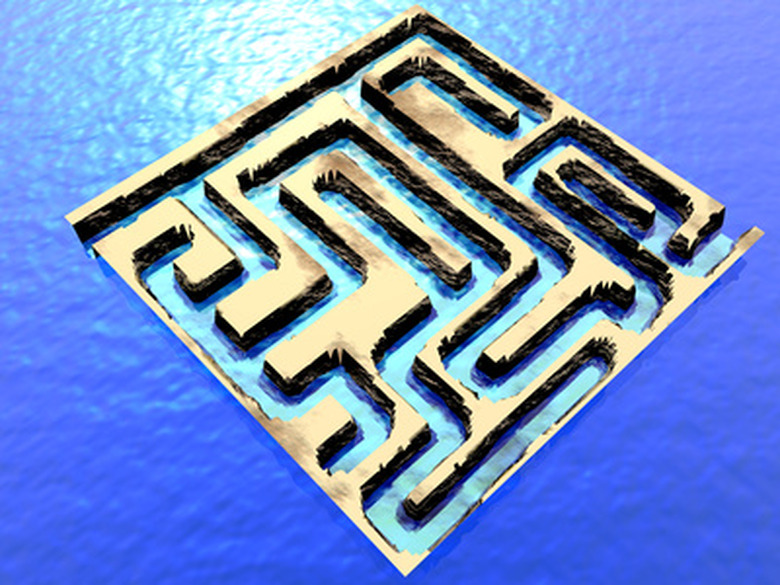How Do I Build A Maze For A Mouse For A Science Fair Project?
Science fair projects vary from the simple to the complex, and range in type from electronic to biological to chemical. A mouse maze is simple to build, but has a wide scope of applications. You can test or demonstrate several theories with this project, giving you a choice of how you want to proceed. Test more than one theory for an edge up on the rest of the science fair projects.
Step 1
Draw your maze design on paper and decide how big you want it to be. Make a simple maze if you are want to demonstrate something like a mouse's food preference. Make it more complicated to show memory.
Step 2
Seal the wood board so mice waste won't absorb into the wood.
Step 3
Draw the walls on the board. Make sure the correct route isn't blocked.
Step 4
Measure the walls drawn on the base. Cut boards or cardboard, depending on your budget, for walls. Make them at least 4 inches tall.
Step 5
Glue the walls in place with super glue. If the boards are big enough, drill holes and screw them in place. Drill holes through the base, then glue the boards in place. After the glue dries, flip the maze upside down and drill through the holes in the base into the maze walls. Insert screws into the holes into the base and tighten down with a screwdriver.
Things Needed
- Wood sealer
- 1 large wood board for base, size depends on the size of your maze
- Wood strips or cardboard for walls
- Super glue
- Drill (optional)
- Screws (optional)
References
Cite This Article
MLA
Dooley, Tara. "How Do I Build A Maze For A Mouse For A Science Fair Project?" sciencing.com, https://www.sciencing.com/do-mouse-science-fair-project-6382644/. 24 April 2017.
APA
Dooley, Tara. (2017, April 24). How Do I Build A Maze For A Mouse For A Science Fair Project?. sciencing.com. Retrieved from https://www.sciencing.com/do-mouse-science-fair-project-6382644/
Chicago
Dooley, Tara. How Do I Build A Maze For A Mouse For A Science Fair Project? last modified August 30, 2022. https://www.sciencing.com/do-mouse-science-fair-project-6382644/
